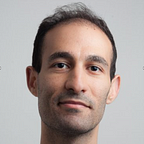The Science of Laughter
What happens in your brain when you get the giggles?
 People laugh about five times in every 10 minutes of conversation. They are also 30 times more likely to laugh when they are with other people compared to when they are alone. It’s common to think of laughter as a loud reaction to a funny joke, but most of the time it’s simply a recurring feature of normal social interaction.
People laugh about five times in every 10 minutes of conversation. They are also 30 times more likely to laugh when they are with other people compared to when they are alone. It’s common to think of laughter as a loud reaction to a funny joke, but most of the time it’s simply a recurring feature of normal social interaction.
Sophie Scott is a scientist and professor at University College London who leads much of the current research about laughter. Interestingly enough, she says, “most of the laughter you produce is not helpless” but rather the result of a voluntary act.
Laughter comes in two shades: voluntary and spontaneous. Voluntary laughter is the social lubricant that helps a conversation run smoothly, while spontaneous laughter erupts following a particularly humorous remark. Each form uses a different network in the brain. Voluntary laughter typically features more activity in frontal and motor areas of the brain associated with action planning and language. Spontaneous laughter includes greater activity in deeper structures such as the hypothalamus, which regulates basic physiological processes like hormonal balance.
Humans aren’t the only species to express these two types of laughter. Chimpanzees demonstrate a similar pattern…
